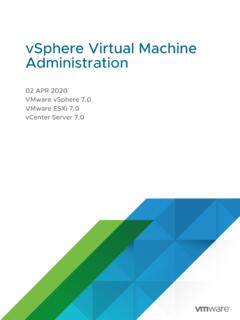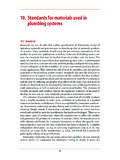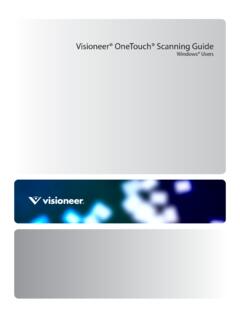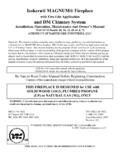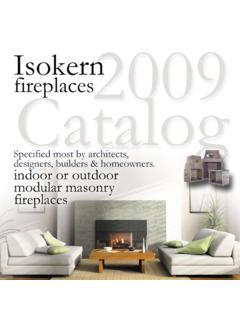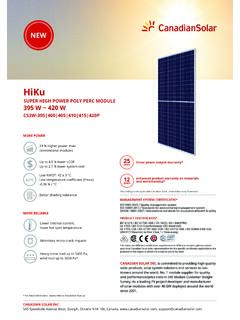Transcription of Expansion Joints – Engineering Guide
1 Expansion Joints Engineering Guide Fabric Expansion Joints for ducting systems ESA Publication No. 011/09 (revision 2 of publication 011/01) 2009 September This page is left blank intentionally 1 ESA Publication No. 011/09 (revision 2 of publication 011/01) Expansion Joints Engineering Guide Fabric Expansion Joints for ducting systems Revision 1 contains change of address details for the ESA Revision 2 contains amendments to section on Conversion factors (SI units) This document is the copyright 2009 of the European Sealing Association (ESA). All rights reserved. Members of the ESA may copy this document as required. No part of this publication may be reproduced in any form by non-members without prior written permission of the ESA. European Sealing Association Tegfryn Tregarth Gwynedd LL57 4PL United Kingdom TEL : +44 1248 600 250 Fax: +44 1248 600 250 2 This document is published by the European Sealing Association (ESA), sponsored by the ESA Expansion Joints Division, on behalf of the Members of the Association.
2 The European Sealing Association is a pan-European organisation, established in 1992 and representing a strong majority of the fluid sealing market in Europe. Member Companies are involved in the manufacture and supply of sealing materials, crucial components in the safe containment of fluids during processing and use. Leading manufacturers have joined together to form the Expansion Joints Division of the ESA, to serve industry better and to expand technology in the area of the proper application of these products. Membership of the Division requires: - a good track record in the industry (including trading for at least 5 years under the same company identity) - operation according to good business practices and ethics - ISO 9000 accreditation or an equivalent accepted quality scheme All Members of the ESA Expansion Joints Division commit to working according to the principles and requirements as indicated in this Engineering Guide .
3 For an up to date list of Members, please refer to the Expansion Joints Division page of the ESA web site on (the Division page is located within Organisation , under Divisions ) Acknowledgements The ESA is pleased to recognise the co-operation of Member Companies and others in the preparation of this document, notably the Members of the ESA Expansion Joints Division (for a list of Members, please refer to the ESA website). Without their support, this document would not have been possible. Thanks go especially to: Phil Cope Derek Davidson Brian S Ellis Bill Evans Ben Foulkes Hans V Hansen Mogens Lindholm Hansen Volker Heid Mike Ingle Harald Poppke Stefan Puchtler Adrian Wakefield The ESA is also pleased to acknowledge the co-operation of the Fluid Sealing Association (FSA) and the RAL Quality Assurance Association in the development of this publication.
4 In particular, certain sections in this document are adapted from earlier or existing FSA or RAL publications, and these are acknowledged where appropriate. Most of the challenges associated with sealing technology are global in nature, and this is reflected in the close collaboration with these organisations. The Fluid Sealing Association (FSA) is an international trade association, founded in 1933. Members are involved in the production and marketing of virtually every kind of fluid sealing device available today. FSA membership includes a number of companies in Europe and Central and South America, but is most heavily concentrated in North America. FSA Members account for almost 90% of the manufacturing capacity for fluid sealing devices in the NASFTA market. The RAL Quality Assurance Association was founded in Germany in 1990 as a RAL G tegemeinschaft , meaning that the quality mark is officially acknowledged by both governmental and non-governmental bodies involved with non-metallic Expansion Joints .
5 The aims are to create and upgrade a high quality standard guaranteed for each product delivered by a Member Company. The quality mark is based on a third party control system, supported by a special quality management system certified according to ISO 9000, to ensure the quality principles of the quality mark in each stage of manufacturing. Key activities include: - maintenance and, if possible, improvement of the acknowledged quality standard of the RAL Quality Mark according to state-of-the-art good Engineering practice - creation and revision of technical information in order to provide competent answers to the crucial questions from the users of non-metallic Expansion Joints This publication is intended to provide information for guidance only. The European Sealing Association has made diligent efforts to ensure that recommendations are technically sound, but does not warrant, either expressly or by implication, the accuracy or completeness of the information, nor does the Association assume any liability resulting from the reliance upon any detail contained herein.
6 Readers must ensure products and procedures are suitable for their specific application by reference to the manufacturer. Also, the document does not attempt to address compliance requirements of regulations specific to a particular industrial facility. Readers should consult appropriate local, regional, state, national or federal authorities for precise compliance issues. 3 Contents Page 1. Introduction 4 Overall definition Fabric Expansion Joints Focus of this document Background to environmental legislation 2. Definition of the products and technology 8 Industry applications Expansion joint technology 3. Expansion joint construction and configuration 9 Construction Major configurations 4.
7 Expansion joint components 12 Major components Other key components 5. Design and selection criteria 21 Ambient conditions Bolting guidelines for bolted Expansion Joints Dust loading and velocity Finite element analysis Leakage Moisture content, condensation and washing Movement Noise Pressure Temperature Tolerances 6. Materials 28 Testing of materials 7. Health and safety 31 8.
8 Transportation, storage, handling for installation and afterwards 32 9. Quality assurance 34 Identification and control of materials Drawing and document control Manufacturing processes control Testing, inspection and documentation Final inspection and preparation for delivery 10. Warranties and liabilities 36 11. Flue-gas and nekal tightness 37 Flue-gas tight fabric Expansion Joints Nekal-tight fabric Expansion Joints 12.
9 Glossary of terms 38 13. Conversion factors 43 SI units Multiples of SI units Units of common usage in Expansion joint terminology Conversion factors (SI units) 14. References 48 4 1. Introduction This document has been prepared for use by designers, Engineering contractors, end users and original equipment manufacturers. It is focused on solutions to the typical challenges faced by engineers responsible for ducting and equipment connections involving Expansion Joints . The document aims to provide the reader with: 2 a better understanding of fabric Expansion Joints 2 a means of evaluating the various options available 2 a series of guidelines for the safe usage of Expansion joint components.
10 In order to ensure maximum safety and performance of the joint under service conditions. This Guide describes in detail the applications and capabilities of fabric Expansion Joints , provides information on standard Expansion Joints and outlines the basic Engineering concepts involved. The document provides information on materials used, plus other sections arranged to help in the design and specification of fabric Expansion Joints . Importantly, the Guide provides the basis for maximising communication between user and manufacturer, in order that both may work together productively to solve challenges through the selection and use of the most appropriate technology for the application. Overall definition The generic description Expansion joint covers a wide variety of products used to absorb movement in ducts and pipelines. There are many applications for these products, and there is some overlap between the various types of Expansion joint that can be used for a specific purpose.
